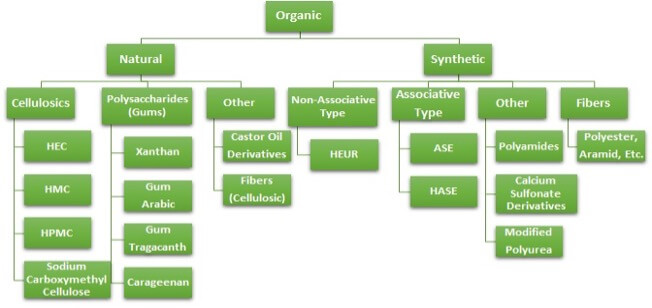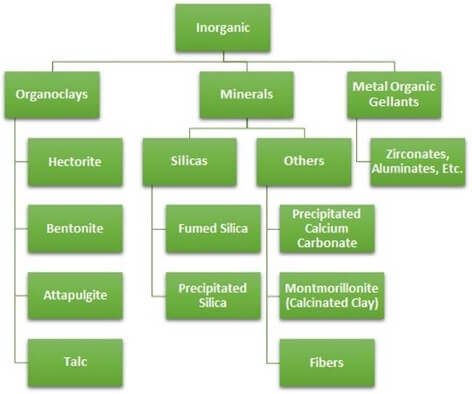Enhancing Coatings, Sealants, and Adhesives with Rheology Modifiers
Reading Time: 4 minutes
Rheology modifiers are additives that can improve the overall performance of adhesives, sealants, and coatings. They can impact viscosity, boost thickness, improve adhesion, and ensure a quality product. These modifiers are particularly beneficial for sealants, paints, adhesives, and industrial coatings, offering enhancements in:
- Thickness
- Stickiness
- Viscosity level
- Coverage ability
- Vertical spread
- Product longevity
Importance of Enhancements
Viscosity
The right viscosity is crucial for adhesive, coatings, sealants, and inks to prevent unwanted sagging, drips, and splattering. Rheology modifiers ensure the product isn’t overly liquid during application while setting quickly when the shear from applying the product is removed. The right rheology modifier allows product application onto a vertical surface without sagging or dripping.
Adhesion
Using rheology modifiers, adhesives, and coatings are applied more quickly, which is crucial in a fast-paced production environment or on a construction worksite. Rheology modifiers will improve the wetting out of the substrate surface, allowing for improved adhesion.
Shelf Life
Rheology modifiers also extend the product’s shelf life by maintaining a consistent viscosity during product life. They prevent pigment from settling in inks and paints during transport and storage, ensuring quality upon use.
Thixotropy
A rheology modifier with thixotropic properties will reduce the viscosity of the coating, sealant, adhesive, paint, or ink when shear is applied during the product application. Lowering the viscosity allows for a better product flow during the application process. After the shear is removed, the viscosity increases quickly, preventing the coating from sagging, running, or dripping off the vertical surface.
Value-Added Possibilities*
Offering a myriad of behavior benefits, rheology may positively affect the production, performance and life of adhesives, paintings, laminates, tapes, and sealants in many ways:
- Reduce settling to increase shelf life.
- Reduce time and energy costs associated with mixing and pumping.
- Enhance thickening efficiency.
- Lower raw material costs by using less product while keeping performance level.
- Minimize splattering during manufacture and application.
- Increase manufacturing or converting speed.
- Reduce penetration into porous substrates.
- Increase sag resistance.
- Increase coating build (thickness) per application.
- Reduce open or drying time.
- Improve material spray ability and brush ability.
- Enhance printability and resolution of adhesive coatings.
How Rheology Affects Adhesives
Taking note of some of the value-added possibilities, The table below outlines how rheology affects various processes related to pressure-sensitive and laminating adhesives.
| Process | Rheology Effect |
| Mixing and Pumping | Easier for an adhesive to mix during compounding or before application and be pumped or transferred.
Easier mixing and pumping reduce process time and energy costs. |
| Setting and Storage | Reduces settling during storage and transport, extending shelf life. |
| Dispensing | Determines application method (roll coating, extrusion, trowel, etc.).
Affects conformance to or “hold” a specific geometric pattern (lines, dots, vertical extrusion, etc.). |
| Application | Flow control helps determine the application process and how fast it runs.
Helps control wetting and penetration into porous substrates while providing sag resistance. |
Reducing Costs
In addition to enhancing product properties, rheology modifiers can reduce costs associated with product manufacturing, performance, and waste.
Optimized Manufacturing
- As low-viscosity liquids, rheology modifiers make formulations easier to mix and pump via bulk handling and metering equipment. Productivity enhancements reduce energy consumption.
- Rheology modifiers enable faster application of adhesive coatings, which is especially important in high-speed tape, label, and laminate manufacturing operations.
Enhanced Product Performance
- Rheology modifiers produce formulations with less shear thinning so viscosity at high shear rates is higher. As a result, thicker wet films typically are applied in one coating.
Reduced Waste
- Rheology modifiers reduce splattering and sagging of formations, reducing waste and simplifying clean-ups.
- Anti-settling properties extend storage life and reduce costs associated with the degraded liquid products.
- By controlling viscosity, rheology modifiers minimize penetration into porous containers such as corrugated boxes to reduce waste.
Rheology Modifiers Chemistries
Rheology modifiers are classified as:
- Organic and inorganic forms.
- Water-borne, solvent-based (that adjust formulation flow properties) or solvent-less formations (that increase viscosity or thixotropic properties)
Charts 1 and 2 below show the classifications of rheology modifiers within organic and inorganic rheology modifiers used with adhesives, sealants, and additives.


The table below shows certain inorganic and organic rheology modifiers are suitable for waterborne, solvent-based, or solvent-less formulations.
| Formulation | Organic | Inorganic |
| Water-borne | Natural gums
Cellulosics Alkali-soluble and alkali swellable emulsions Hydrophobically modified alkali swellable emulsions Hydrophobically modified ethoxylated urethanes |
|
| Solvent-based | Castor oil derivatives
Polyamides Calcium sulfonate derivatives Modified polyurea |
|
| Solvent-less | Fibers |
|
Rheology additives, whether organic or inorganic, have unique properties tailored for specific uses. For instance, cellulose-based organic modifiers excel in providing high shear thinning and compatibility with colorants in water-borne architectural paints. On the other hand, inorganic modifiers like those based on clay offer resistance to settling and heat, making them ideal for industrial, automotive, and protective coatings. The right choice of rheology modifier depends on its distinct attributes.
Selecting the Ideal Rheology Modifier
Different rheology modifiers cater to specific needs, with each category having various grades. For example, HM Royal provides multiple grades of elements like Kevlar pulp fibers, precipitated calcium carbonates, and fumed silica. These are integrated into products like paints, inks, sealants, PVC paste resins, and coatings. Each grade is tailored to meet specific needs in terms of tensile strength, flexibility, water resistance, and viscosity.
Selecting a modifier isn’t just about its properties. Users should also consider how easily it integrates into a formulation, costs, compliance with regulations, and durability. HM Royal has a deep understanding of these modifiers and their industrial applications. Contact us today to discover the perfect thickener for your needs.
Email us at info@hmroyal.com or complete the inquiry form at https://hmroyal.com/contact/. Find out more about the products we represent at www.hmroyal.com.
*Source: Rheology Modifiers Selection for Adhesives and Sealants (specialchem.com)
 (800) 257-9452
(800) 257-9452


